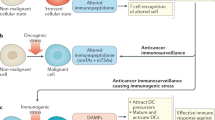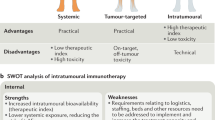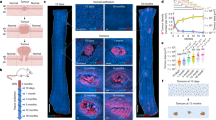Abstract
IT has been known for some time that certain chemical carcinogens depress the immune response1. When the carcinogen is given neonatally this depression may be long lasting2. Stjernswärd has shown that in addition to depressing the serum haemolysin response to heterologous red cells, a number of carcinogens lower the number of antibody forming cells in the spleen as measured by the Jerné technique3. No such depression was found in response to non-carcinogenic analogues tested, but whether or not immunological impairment is an integral part of carcinogenesis as suggested by Prehn and Main4 is not yet known. Tumour-specific antigens have been demonstrated in a variety of chemically induced tumours of both mesodermal and epidermal origin5,6. Transformed cells multiplying to form macroscopically recognizable tumours seem to do so despite their antigenicity : they may represent only the proportion of potentially neoplastic cells which have in some way overcome host resistance.
This is a preview of subscription content, access via your institution
Access options
Subscribe to this journal
Receive 51 print issues and online access
$199.00 per year
only $3.90 per issue
Buy this article
- Purchase on SpringerLink
- Instant access to full article PDF
Prices may be subject to local taxes which are calculated during checkout
Similar content being viewed by others
References
Malmgren, R. A., Bennison, B. E., and McKinley, T. W., Proc. Soc. Exp. Biol. and Med., 79, 484 (1952).
Ball, J. K., Sinclair, N. R., and McCarter, J. A., Science, 152, 650 (1966).
Stjernswärd, J., J. Nat. Cancer Inst., 36, 1189 (1966).
Prehn, R. T., and Main, J. M., J. Nat. Cancer Inst., 18, 769 (1957).
Pasternak, G., Graffi, A., Hoffman, F., and Horn, K. H., Nature, 203, 307 (1964).
Tuffrey, M. A., and Batchelor, J. R., Nature, 204, 349 (1964).
Waterman, N., Acta Cancerologica, 2, 375 (1936).
Collins, J. V., Gardner, W. V., and Strong, L. C., Cancer Res., 2, 405 (1942).
Van-Prohaska, J., Braunschwig, A., and Wilson, H., Arch. Surg., 38, 328 (1939).
Peacock, P. R., and Kirby, A. H. M., Cancer Res., 4, 88 (1944).
Lorenz, E., and Stewart, H. L., J. Nat. Cancer Inst., 1, 17 (1940).
Saxén, E. A., J. Nat. Cancer Inst., 13, 441 (1952).
Engelbreth-Holm, J., and Poulsen, O., Acta Path. Microbiol. Scand., 21, 472 (1944).
Field, W. E. H., and Roe, F. J. C., J. Nat. Cancer Inst., 35, 771 (1965).
Huggins, C., Grand, J. C., and Brillantes, F. P., Nature, 189, 204 (1961).
Hartwell, J. L., Survey of Compounds which have been Tested for Carcinogenic Activity (US Public Health Service, Washington, 1951).
Author information
Authors and Affiliations
Rights and permissions
About this article
Cite this article
WESTON, B. Effect of Route of Administration on Immuno-suppression by DMBA in CBA Mice. Nature 215, 1497–1498 (1967). https://doi.org/10.1038/2151497a0
Received:
Issue date:
DOI: https://doi.org/10.1038/2151497a0



